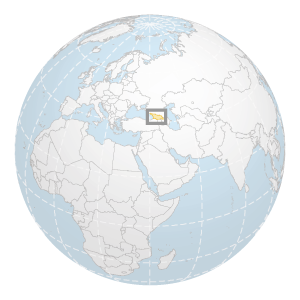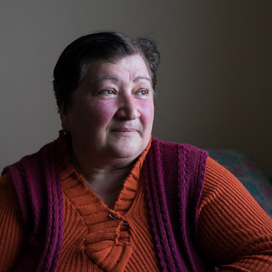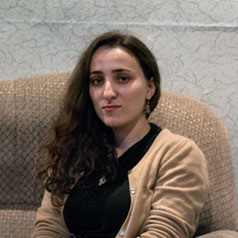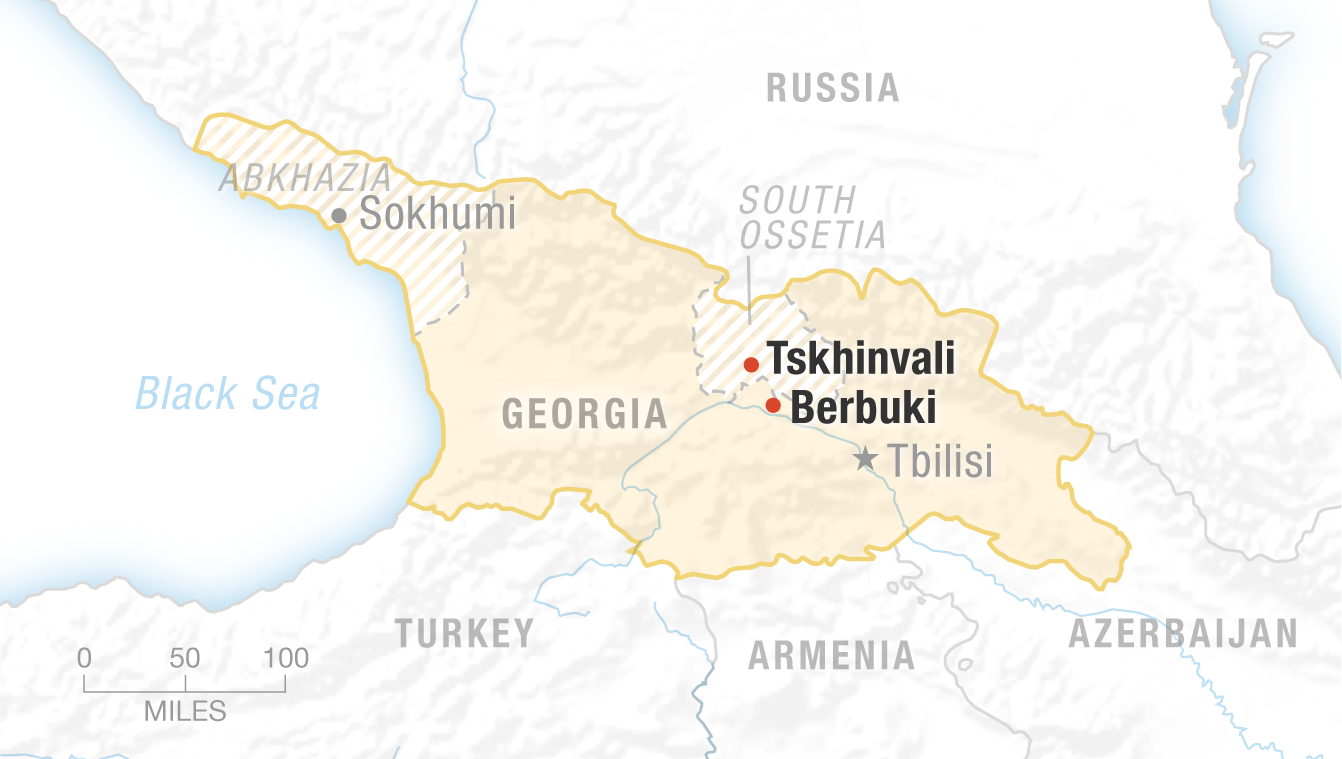Half a dozen women sit on short wooden benches around a tiny table covered with a white cloth. The smell of hot bread wafts out of a nearby shed, where it is baking in a traditional stone oven called a toné.
It is Mother’s Day in Berbuki, and everyone is out celebrating on a balmy March afternoon. When the bread is done, the women pass it around, ripping off hunks to dip in green tomato preserves or top with lard. As at any Georgian feast, there is a pitcher of amber wine on the table. Sabashvili has been appointed the tamada — the toastmaster. She makes toasts for mothers and future mothers and grandmothers, and women in general, before arriving at a toast for peace.
“Let he who wants war have it in his own house,” she says, and everyone drinks.
Sabashvili bakes bread in the communal toné oven in Berbuki. Neighbors and friends often stop by to chat and gossip when it is in use.
In the eight years since the war, residents have planted trees in Berbuki and the birds have arrived. There is even the occasional sound of hammering or a grinding motor, from people making modifications and additions to their cottages. But for Sabashvili, it still feels like a place stuck in between.
“We're not really settled here,” she says. “It’s like when the chicken is sitting on her eggs. When they have lice, they don't sit fully on the egg. They sit a little up. And that’s how I feel — like I’m sitting up. I have a feeling that I have to go somewhere.”
Almost no one in Berbuki has a job. The primary sources of income are a 45 lari ($20) per person monthly allowance from the government, and whatever money people can earn selling extra produce from their gardens or working as itinerant farm laborers.
There are no reliable data on the IDP unemployment rate in Georgia, but anecdotally, it is believed to be much higher than the overall Georgian unemployment rate of 12 percent. Many people in Berbuki were previously farmers and had big plots of land and orchards — but now they have small plots and young orchards, and they lack the skills for other jobs.
(Top) Sabashvili and son Giorgi check on their chickens in their backyard. (Bottom) Very few of Berbuki's residents have full-time jobs, so people spend time stacking firewood or tending plots of vegetables. There is one shop in the settlement — a general store that sells candy, beer, cigarettes, dry goods and other staples.
A few years ago, Sabashvili received a grant from an aid organization for a brand-new sewing machine. As a young woman, she had trained professionally as a seamstress, and she shows off the machine proudly, demonstrating on a scrap of fabric all the different stitches it can make — tightly spaced runners, neat zigzags. She is ready to hem curtains and sew women’s clothing. There’s just one problem — she hasn’t been able to find many clients.
“No one [here] has money, so who is going to pay for orders?” she said.
Sabashvili's new sewing machine sits mostly unused.
She occasionally does some work for friends and people she thinks need the help, but it is hardly the income generator she had hoped it would be. For a while, her husband had a job working construction, but when the project was finished, he was laid off.
Sabashvili often finds herself thinking of life back in Kurta, and of the family members buried there.
“I see my mother-in-law in my dreams,” Sabashvili said. “We are chasing chickens in the yard back there, and she is saying, ‘Where are you guys? I can't see you.’ ”
Field, Berbuki settlement








